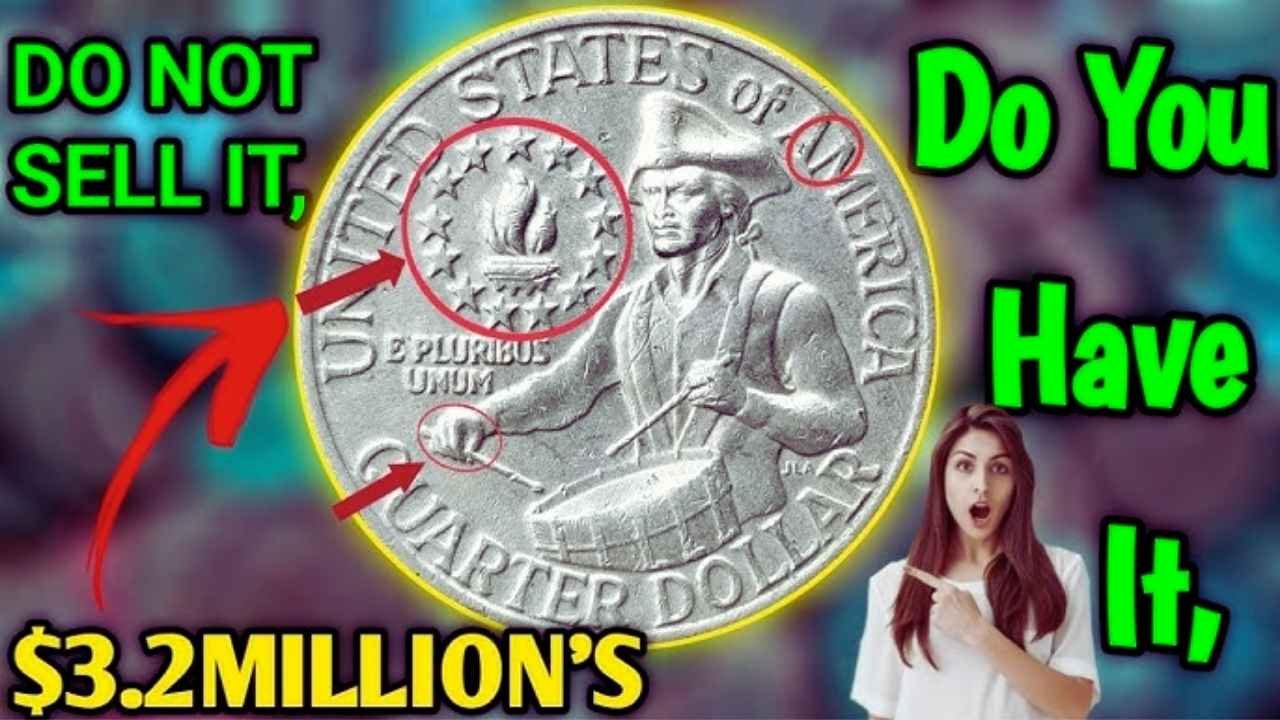Imagine finding a quarter in your wallet that could pay off your house or fund a dream vacation. The 1976 Bicentennial Quarter, minted to celebrate America’s 200th birthday, is a common coin, but a few rare ones are worth up to $3 million! Millions of these quarters, with their unique colonial drummer design, were made, but certain errors and special versions make some stand out. Collectors are crazy about these rare finds, and you might have one hiding in your change. Here’s how to spot the 1976 Bicentennial Quarter that could make you rich.
What Makes This Quarter Special
In 1976, the U.S. Mint created a special quarter to mark 200 years of independence. Unlike regular quarters, it has a colonial drummer on the back and a dual date, “1776-1976,” on the front. Most are worth just 25 cents, but rare versions with unique features fetch huge prices. For example, a 1976-D quarter with a missing clad layer, showing a copper core, is valued at up to $3 million due to its rarity. Other errors, like doubled dies or silver versions, also drive up the value, making these coins a collector’s dream.
Rare Features to Look For
To find a valuable 1976 Bicentennial Quarter, check for specific traits. Look for a 1976-S quarter struck on 40% silver, meant for special collector sets, which can be worth thousands. Check the mint mark: “D” for Denver, “S” for San Francisco, or no mark for Philadelphia. A rare error is the doubled die obverse, where the date or words like “Liberty” appear doubled, boosting value to $150 or more. Another jackpot is a quarter missing its outer nickel layer, revealing a copper core, especially from the Denver mint. Use a magnifying glass to spot these details.
Where to Find These Coins
You don’t need to be a treasure hunter to find these quarters. Check your pocket change, coin rolls from the bank, or old family collections. Flea markets, yard sales, or even vending machine change could hold a gem. Look in places where coins pile up, like car cupholders or forgotten piggy banks. Since millions were minted, these quarters are still in circulation, so keep your eyes peeled wherever cash changes hands. If you spot something unusual, don’t clean it, as that can lower its value.
How to Check Your Coin’s Value
If you think you’ve found a rare quarter, take it to a professional for appraisal. Coin shops or services like the Professional Coin Grading Service (PCGS) can verify its authenticity and condition. Look for:
- A silver color instead of copper-nickel, indicating a 40% silver version.
- A doubled image on the front, especially around the date or “Liberty.”
- A copper core on a 1976-D quarter, showing a missing clad layer.
- A mint mark or lack of one that doesn’t match the coin’s appearance.
High-grade coins in pristine condition fetch the most, so handle them carefully. Auctions or coin shows are great places to sell for top dollar.
Why These Coins Are Worth So Much
The high value comes from rarity and collector demand. Errors like missing clad layers or doubled dies happened by accident, making them super scarce. Silver quarters were only meant for special sets, so finding one in circulation is a big deal. The Bicentennial Quarter’s tie to America’s 200th birthday adds historical appeal, driving up prices at auctions. A single error coin in top shape can change your life if you spot it.
| Coin Feature | Mint Mark | Estimated Value |
|---|---|---|
| Missing Clad Layer | D | Up to $3 million |
| 40% Silver | S | Thousands |
| Doubled Die Obverse | Any | $150–$500+ |
| No Mint Mark (Error) | None | Hundreds |
Next time you get change, take a second look. That quarter might just be your ticket to millions! Check your coins and start hunting today.
